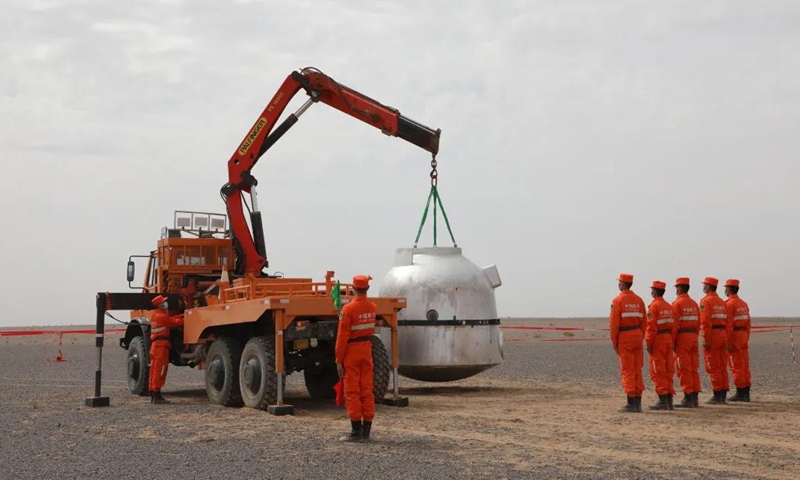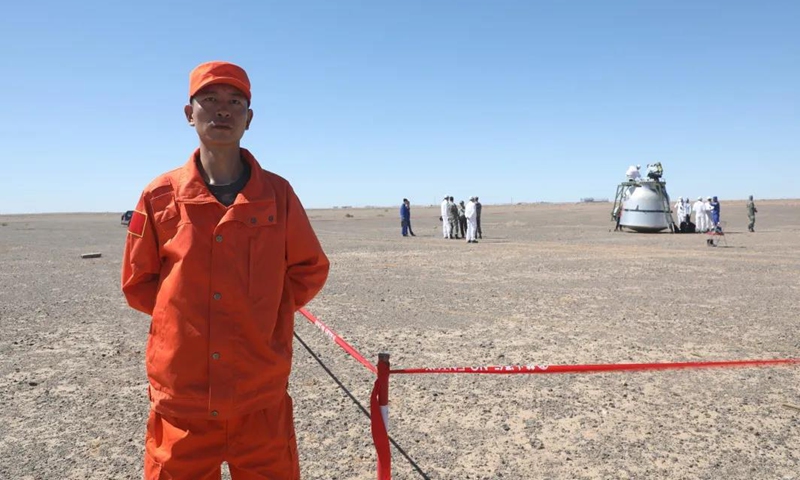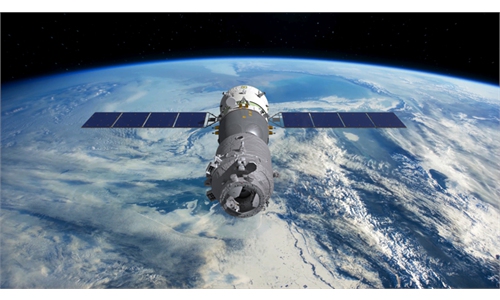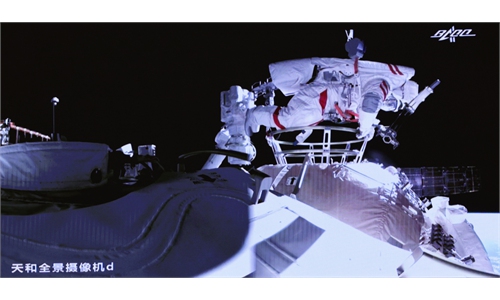
Photo: Jiuquan Satellite Launch Center
A search and rescue team from China's Jiuquan Satellite Launch Center in the Gobi Desert, North China's Inner Mongolia Autonomous Region recently conducted drills at the Dongfeng landing site - the designated spot to receive the returning capsule of the Shenzhou-12 spacecraft by mid-September.
The team has honed their skills in the scientifically-formulated training program, covering practices of search and rescue in different scenarios including those on the ground, in water or air.
Apart from physical and theoretical training, they also underwent more than 30 specific training subjects such as operating drones and rappelling from helicopters, read an article dedicated to show the spirit of the team in pursuit of the goal of "see you at Dongfeng" and published in the Jiuquan center's official WeChat public account on Wednesday.
The team was seen in orange suits and operating beside a re-entry capsule look-alike, as a special crane hoisted the craft from the ground.
In May last year, the Dongfeng landing site received the capsule of the trial version of new-generation manned spacecraft, which undertook a flight that took two days and 19 hours, the Global Times reported. The site has been designated for the landing of the capsule of the Shenzhou-12 spacecraft, replacing the Siziwang Banner landing site that used to be the go-to site to receive returning Shenzhou spacecraft.
The Shenzhou-12 crew, with three taikonauts led by mission commander Nie Haisheng, is expected to conclude their three-month stay in China's Tianhe space station core module and return to earth in the middle of September, the Global Times learned from the China Manned Space Agency (CMSA).

Photo: Jiuquan Satellite Launch Center
The Beijing Institute of Radio Metrology and Measurement, or Institute 203 of the state-owned space and arms giant CASIC Second Academy, has developed two new radar systems to work in a relay race fashion to boost the efficiency of the process, the institute told the Global Times on Thursday.
A C-band solid state active phased array measuring radar, a first in the country, will serve as the first runner in the relay, which is mainly tasked to trace the orbit of the capsule on its way back, and provide real-time data to the commander center in order to guide the rescue and search team working in front.
The other is a ground-based passive locating and positioning radar system, which will work after the craft opens its parachute. It is capable of resisting harsh weather, and establishing a coordinate system and increasing the precision of the search work from kilometer-level to hundred meter-level, greatly reducing the time of search and rescue.





